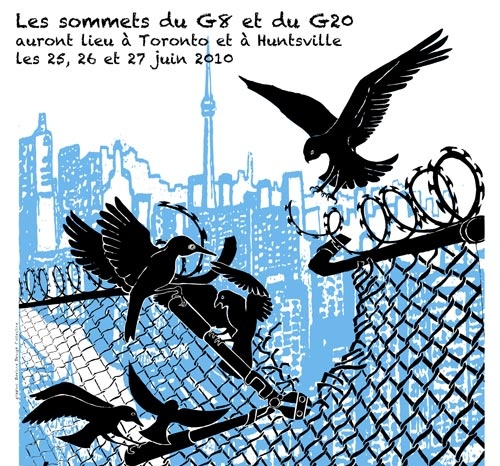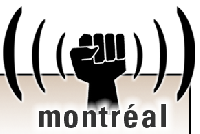 |
 |
 |
 |
 |
 |
|
 |
 |
 |
 |
 |
 |
 |
Régions du Québec |  |
 |
 |
|
 |
 |
|
 |
 |
|
 |
 |
 |
 |
 |
 |
Temas |  |
 |
 |
|
 |
 |
|
 |
|
 |
 |
 |
Industrialists proud boast: Use a Haitian Sweatshop - We pay our workers next to nothing
While the after effects of natural disaters and unnatural international intervention dominate in Haiti outside the country the business community continues to bang the promotional drum. Latest stop an Indianapolis Trade Fair and a new chance to push the Ouanaminthe "Free Trade Zone"
Situated in the extreme north east of Haiti, hard on the border to the Dominican Republic, the town of Ouanaminthe should be a small paradise. History and commerce however has seen that it is anything but. In 1937 Dominican Republic Dictator Trujillo ordered a massacre of Haitian migrants living and working on the Dominican side of the border. Dominican soldiers, using the colour of a persons skin and their ability to pronounce Spanish words as a guide, cut 20,000 Haitians down. Thousands more were displaced and fled to Ouanaminthe. Today the memories are just that, yet the river formimg the border bears witness and today is known quite simply as Massacre River. In 1993 the UN ordered a fuel embargo on Haiti as part of a concerted effort to remove the military dictatorship of General Cedras. Embargos can always be broken and Ouanminthe became the centre of an illicit fuel trade. Thousands of poor Haitians flooded into the town hoping to make their fortune, thousands of litres of oil based products flooded into the soil and water system. The pollution has never been cleared up; nor has the after effects of the rapidly built and subsequently abandoned shanty towns been rectified. Apart from the rubbish and sanitary waste issues, the makeshift community needed wood for cooking and warmth, this they simply took from surrounding forests, a deforestation tradition carried out by the developers of the Ouanaminthe Free Trade Zone. Innaurgartard in 2002 the Free Trade Zone was part of the Aristide governments attempt to pacify the neo-liberal pressures to privitise and liberalise the Haitian economy. Funded by the IMF, through the IFC, it is a huge, shambling, complex right on the border, (there are entrances and exits on both the Haitian and Dominican sides; all important visitors enter and leave through the Dominican doors) . At the momment it is used by its owners, Dominican textile producer Grupo M and the workers stich predominately for Levi Strauss, but also for other international brand concerns. While the international finance community celebrated the plants opening the reality for the workers, or at least the Haitian workers, has been somewhat different. Not only have Haitian domestic labor laws been violated and agreements with international workers rights groups ignored employees at the plant have reportedly been subject to regular intimidation and violence by the Dominican Army and forced to recieve unknown, undeclared injections. Additionally the area around Ounaminthe has lost hundreds of hectares of fertile agricultural land, suffered deforestation to facilitate access and the return of shanty settlements as Haitians searching work travel to Ouanaminthe.
While normal Haitians attempt to cope with the after effects of the February violence, the removal of President Aristide and the summer hurricanes, the Haitian business community continue to push Haiti as the perfect outsourcing base. And why not; situated just of the Florida coast Haiti offers American companies almost unlimited benfits with minimal beurocratic formalities. At the Electrical Manufacturers? Expo in Indianapolis in September Rudolf and Reginal Boulos continued the drum beating for Ouanaminthe. Family Boulos are a prominent Haitian family, well known for their links to right wing groups and founders of the Haitian Democracy Project (sic) Rudolph Boulos was also indited in the murder of Haitian journalist Jean Dominique, who had pursued the businessman over the death of at least 60 children who had taken a "cough medicine" produced by Boulos. No charges ever followed his questioning.
During their presentation, (available at http://haitipolicy.org/Electrical_files/frame.htm) family Boulos extoll the virtues of Ouanaminthe. Without aparrent sarcasim or irony they push amongt other advantages, the;
"Competitvely priced workforce"; Haitian laborors are paid considerably less than the Dominican workers at the plant.
"Immediate turnaround" the harsh reality of the International textile market is short delivery times and high pressure to meet tight dealines.
"Two countries = added advantage"; the labels on the finsihed products read "Made in Haiti, Finished in the Dominican Republic", and so circumnavigate quota limits.
"Minimum Daily wage in Haiti:$1.62. Benefits also slightly lower" Although the Haitain workers get around $1.90 per day, it still represents a pitiful return for a days work on a product that will eventually sell for much, much more. However such are the margins and presures in the international textile trade, that a few cents saved on the workers can make the diffence between losing and keeping an order.
"Excellent labour relations"; unless the labour happen to be a member of a trade union, Haitian, question management practices, show initiative or upset the Dominican soldiers guarding the complex.
All the claims and promises made in the presentation, including the conclusion that costs can be kept down through the combination "cheap labour - tax exemptions - low transportation costs", are eerily similar to those made in the 1997 "Guide to investing in Haiti". Publishd by the Manufacturers Association of Haiti (ADIH), the section "Good Reasons to Invest in Haiti" includes;
"Minimal intervention by the State in the market: Government regulated prices are reduced for five products and services including: oil, energy, telecommunications, transportation, and the minimum wage."
The Boulos presentation ends with the "Key Benefits":
"Decisive cost management in a price dominated market"
"Capicity to devlop and produce in record time from order to supply"
These are what the industrialists want.
What the majority of Haitians want is the ability to be self sufficient in terms of staple foodstuffs, something they could lay claim to before the privitisations of the mid 90s military regime undermined domestic production to the benefit of subsidised US imports and a situation that wont be achievable when high quality agricultural land is concreted over to build clothes production factories.
They want access to education, something which will become even harder when qualified teachers have to take jobs stiching jeans becuse there is no education budget for wages, books or buildings and anyway the official language of education is French, spoken by 7% of the population rather than the Creole spoken by the overwhelming majority of Haitians.
They want the right to self determination, something they will never have so long as the forces of international capital continue to excert a dominating force over their country.
Next to a picture a smiling Haitian worker stands the claim;
"A win-win sitaution: Haiti gets jobs, investors compete"
Haiti gets real foreign investment, jobs where humane conditions prevail and a chance to build a secure fututre for itself and its population would no doubt increase the smile on not only her face, but also those of all her collegues and countrymen.
 |
 |
 |
 |
G20 Especial |  |
 |
 |
|
 |
 |
|
 |
Ofrecemos varios informes independientes y testimonios ...

Lista de acciones durante el 'contracumbre' a Toronto! Algunos medios independientes en Toronto G20 Centro de medios alternativos http://2010.mediacoop.ca Media Co-op Toronto http://toronto.mediacoop.ca Toronto Community Mobilization www.attacktheroots.net (en Inglés) |
 |
 |
 |
 |
 |
 |
 |
CMAQ: Vie associative |  |
 |
 |
|
 |
 |
|
 |
 Collectif à Québec: n'existe plus. Impliquez-vous ! |
 |
 |
 |
 |
 |
 |
 |
 |
|
 |
 |
 |
Ceci est un média alternatif de publication ouverte. Le collectif CMAQ, qui gère la validation des contributions sur le Indymedia-Québec, n'endosse aucunement les propos et ne juge pas de la véracité des informations. Ce sont les commentaires des Internautes, comme vous, qui servent à évaluer la qualité de l'information. Nous avons néanmoins une
Politique éditoriale
, qui essentiellement demande que les contributions portent sur une question d'émancipation et ne proviennent pas de médias commerciaux.
This is an alternative media using open publishing. The CMAQ collective, who validates the posts submitted on the Indymedia-Quebec, does not endorse in any way the opinions and statements and does not judge if the information is correct or true. The quality of the information is evaluated by the comments from Internet surfers, like yourself. We nonetheless have an
Editorial Policy
, which essentially requires that posts be related to questions of emancipation and does not come from a commercial media.


